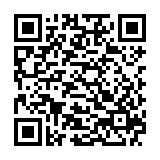The hype around artificial intelligence (AI) that has been around in the last few years can be compared to the Internet boom of the 1990s. What’s different, however, is the depth of the impact that this new technology has on our lives. Every person can now use AI tools for translation, writing, and communication in many different languages. As machine learning is becoming an integral part of our lives, it’s interesting to analyze how it’s changing the way we communicate.
Hence, this article answers a simple question: how is AI used in communication?
How Does AI in Communication Work?
AI communication is any exchange of messages in which people use artificial intelligence machines to comprehend and translate any sort of language, communicating in a human-like way. Relying on machine learning and natural language processing (NLP), AI communication is massively implemented in chatbot communication, transcription, and real-time translation. Also, the role of AI in business communication has been rapidly growing, due to the increased number of companies working on innovative solutions that enhance AI in enterprise communication.
AI in Business Communication
One of the fastest-expanding areas of AI development is everyday AI communication. When you open your e-banking app, a chatbot will soon appear to check how it can help you. The same thing happens when you open any kind of e-commerce, travel, fintech, or most other websites these days. Such use of advanced AI chatbots is meant to facilitate the basic communication process between customers and service providers.
The human factor is still important, since chatbots are here just to identify the problems that customers are facing. However, most companies retain the layer of human customer support, so that customers can interact with trained human assistants who can resolve their issues as soon as possible. A report published by McKinsey in 2024 showed that the use of chatbots can cut customer support costs by 30%.
Meeting Transcription
How many times have you finished a meeting with an afterthought that you’re not sure about some details you’ve discussed with your partners? The advent of AI-enhanced transcription tools has changed the way we interact in meetings. For instance, MeetGeek, Otter.ai, and other similar options help you take meeting minutes in a matter of seconds. Businesspeople now only need to switch on their preferred tool before the meeting, and they can have the entire conversation ready in writing at the moment they end the meeting. From there, they can ask for a summary, or the tool in question can extract some particular parts of the meeting.
Slack transcription is a nice example of AI in business communication. You can transcribe every voice message in English with pretty high accuracy. As a matter of fact, the transcription appears as you play the message you’ve received. It’s a highly convenient feature for teams with members from different parts of the world, helping them fully understand what has been communicated.
The Growing Role of Virtual Assistants
Cutting-edge virtual assistants have completely changed many of our daily habits. Using Alexa for Amazon purchases or Siri for various activities we carry out every day makes our existence easier. Alexa is here to take care of your shopping preferences, from recommending you new books or other items based on your previous purchases, to full-scale purchases. Apple’s Siri can do anything, from simple operations like calling your partner after your voice command to more complex procedures, such as booking your flights or helping you track your daily expenses.
Since Google is still the most popular global search engine by far, Google Assistant and Gemini will become even more important in handling our everyday endeavors with ease. From mere voice search to AI snippets that have taken Google by storm, to language translation and interpreting, communication technology is becoming an inevitable part of our lives.
The Limitations of AI in Communication
No matter how powerful AI communications have become, artificial intelligence is still not omnipotent. So, when we compare AI and human translators and interpreters, metaphors and indirect meanings are the first limitation that crosses our mind. AI-enhanced tools are still pretty weak at interpreting more complex ideas or expressions and words with ambiguous meanings within a specific context. Siri won’t understand your emotions, even though its responses might sound as if it does; AI tools are programmed to be at your service, which includes sounding compassionate. But they still don’t understand people’s emotions, which is reflected in translation and interpreting.
Also, when you translate a sentence using an AI translation tool, it can hardly recognize the speaker’s tone; hence, it’s pretty hard for a virtual language assistant to grasp and translate irony in voice. A human translator or interpreter can clearly understand such nuances. Another instance where people are superior to AI translation tools is cultural references. Most AI translators won’t be able to properly convey a momentarily created joke. On the other hand, they are able to translate the concepts they already have within their language network. For instance, if you ask Chat GPT to discuss or even translate a slang joke made at, say, Eddie Murphy’s Raw standup, it will be able to do it, given that this AI tool recognizes the event and the joke within the available databases.
AI Communication Before Us
Technology and communication have become so intertwined that we’ve become dependent on tech solutions in communication, especially AI tools. If we know that commercially available AI software solutions have been with us for a few years, we can conclude we’re only at the dawn of the age of AI in communication. Just like any other hype in information technology behind us, the craze will wane a bit after some time. Still, we’ll have cutting-edge AI communication tools at the palm of our hands in the time before us; as time goes by, they’ll become even more important for our daily routines.

Pavle has a decade and a half of linguistic experience, first as an ESL teacher, then as a translator and interpreter. In the last third of his career quest so far, he has turned to content marketing, as the most exciting branch of applied linguistics.
Having worked as a content specialist and editor while following the latest linguistic and tech trends, he has specialised in bringing the current affairs in the lingtech sector to the spotlight.
When he’s not crafting his briefs and drafts, and writing his stuff, he likes to pluck a chord or two on his old guitar, or just go to a pub quiz; a father of three, a husband of one.




0 Comments